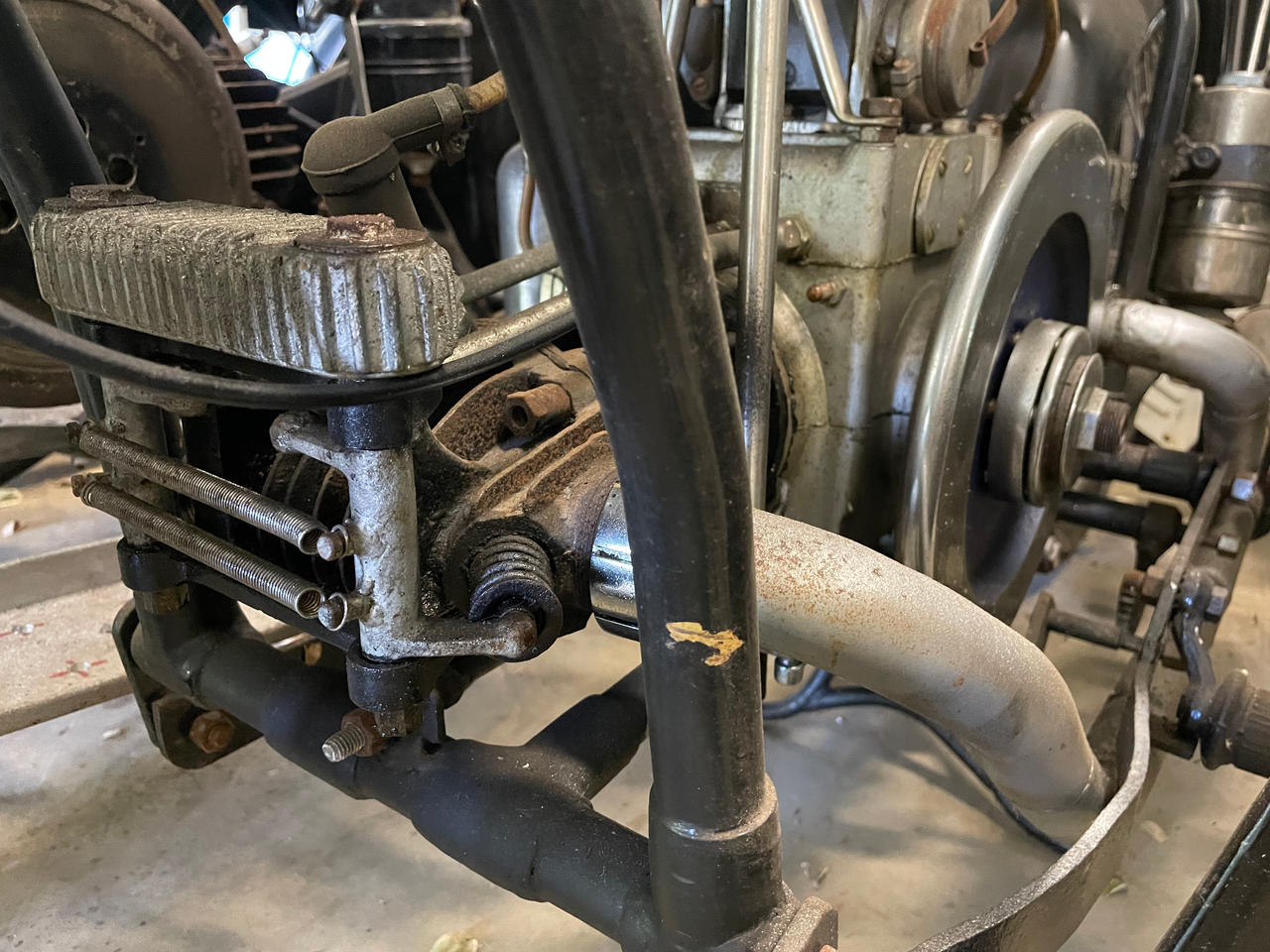I have seen some really interesting stuff on this thread.
Here is a video about the McLaren MP4/4. It happens to be a F1 topic but that is incidental.
- Login or Register
No account yet? Sign up
the true behaviours of an IC engine were for a century .....johnny comelately wrote: ↑26 Dec 2022, 21:14... There has been a parallel situation with IC engines where for a century we just made it work but in the last few years it has been approached scientifically which has unlocked the true behaviours of an IC engine. This has been perfectly shown in the diesel Le Mans cars and now more amazingly in the latest F1 motors....
Only in a digressing macro sense are you right but you have missed the point which is our current designs and rules about the electrical side (and materials) will be looked on as cumbersome as was our approach to IC engine power because we did not understand the fundamentals just the resultants.Tommy Cookers wrote: ↑27 Dec 2022, 14:07the true behaviours of an IC engine were for a century .....johnny comelately wrote: ↑26 Dec 2022, 21:14... There has been a parallel situation with IC engines where for a century we just made it work but in the last few years it has been approached scientifically which has unlocked the true behaviours of an IC engine. This has been perfectly shown in the diesel Le Mans cars and now more amazingly in the latest F1 motors....
locked out by F1 and GP rules (being capacity-based not fuel-based) - so rewarding fuel inefficiency not fuel efficiency
eg F1 has just allowed (80 year old) Miller cycle and (80 year old) power recovery turbines
and it still bans any kind of energy accumulation (for better laptime) - unless done electrically
until 30 years ago power electronics (and batteries) were rubbish - that's what prevented wind power
nothing cumbersome - the electric cycle (apart from the battery) is c. 95% efficient (helped by 8-speed transmission)johnny comelately wrote: ↑28 Dec 2022, 00:09... our current designs and rules about the electrical side (and materials) will be looked on as cumbersome ...
... combustion efficiency ....
....now we run them an "impossible" lean that would have been impossible to fire up without backfire ....
What did you think of the explanation of the electric fundamentals by the way?
Tommy Cookers wrote: ↑28 Dec 2022, 16:23nothing cumbersome - the electric cycle (apart from the battery) is c. 95% efficient (helped by 8-speed transmission)johnny comelately wrote: ↑28 Dec 2022, 00:09... our current designs and rules about the electrical side (and materials) will be looked on as cumbersome ...
... combustion efficiency ....
....now we run them an "impossible" lean that would have been impossible to fire up without backfire ....
What did you think of the explanation of the electric fundamentals by the way?
IT IS CUMBERSOME IN TERMS OF WEIGHT, SIZE AND COOLING REQUIREMENTS (INCLUDING THE BATTERY)
indicated thermal efficiency ITE (not combustion efficiency) is .....
the work applied to the piston crown relative to the heat content of the fuel
THE ABILITY TO HAVE THESE CURRENT ENGINES HAS BEEN ENABLED BY A DEEP DIVE INTO THE FUNDAMENTALS OF COMBUSTION UNDER IC ENGINE CONDITIONS AT AN ATOMIC LEVEL, NEVER BEFORE DONE. ALONG WITH ADVANCES IN MATERIALS TO ENABLE THE EFFICIENCY.
the consensus seems to say F1 is Miller cycle and so leaning isn't beyond precedent - given the fuel is heated etc
FUEL HEATING CAME FROM UNDERSTANDING COMBUSTION AND YES THAT HAS PRECEDENT BUT THE MOLECULAR LEVEL OF KNOWLEDGE REFINED ITS USE.
I WISH THE TERM "MILLER CYCLE" WOULD NEVER HAVE BEEN COINED AND SHOULD BE DISCONTINUED AS IT IS A GO TO FOR THOSE THAT SHORT CIRCUIT EXPLANATIONS (nothing personal there Tommy). TIMING IS TIMING AND WHAT WORKS FOR A GIVEN, JUST WORKS.
the electromagnetic fundamentals haven't changed - the devices eg FETs etc have (and liquid cooling helps)
Good stuff, thanks!tok-tokkie wrote: ↑25 Dec 2022, 09:32I have seen some really interesting stuff on this thread.
Here is a video about the McLaren MP4/4. It happens to be a F1 topic but that is incidental.
wasn't/isn't this expected ? - and general ?Big Tea wrote: ↑03 Jan 2023, 20:31I post it under interesting stuff .....
https://www.youtube.com/watch?v=cogaWBFVJWg
It concerns a time limit for existing 'contracts' after which there is a huge drop in value
Also, if everyone is just using the grid as a battery, who pays for the grid?Tommy Cookers wrote: ↑05 Jan 2023, 15:26wasn't/isn't this expected ? - and general ?Big Tea wrote: ↑03 Jan 2023, 20:31I post it under interesting stuff .....
https://www.youtube.com/watch?v=cogaWBFVJWg
It concerns a time limit for existing 'contracts' after which there is a huge drop in value
seriously .....
now that government's policies have got many big players into solar power generation etc ....
would anyone now want to put solar panels on their own roof ?
I posted it more as a prompt to anyone with or preparing a system as you have to have finalised the agreement soon to keep the current payments.Tommy Cookers wrote: ↑05 Jan 2023, 15:26wasn't/isn't this expected ? - and general ?Big Tea wrote: ↑03 Jan 2023, 20:31I post it under interesting stuff .....
https://www.youtube.com/watch?v=cogaWBFVJWg
It concerns a time limit for existing 'contracts' after which there is a huge drop in value
seriously .....
now that government's policies have got many big players into solar power generation etc ....
would anyone now want to put solar panels on their own roof ?
